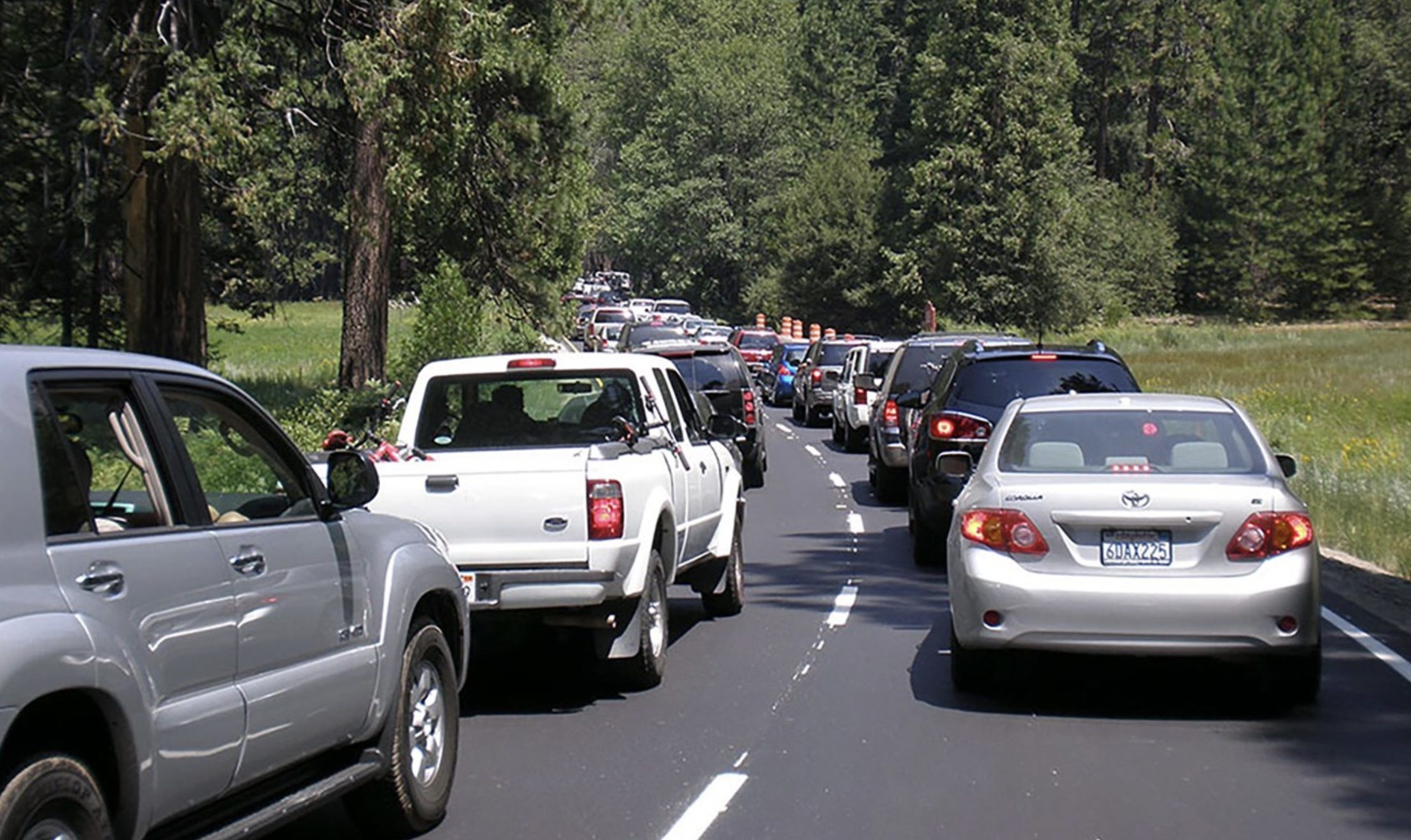The National Park Service is winding up a two-year planning process and will accept public comment on its proposed Visitor Access Management Plan until September 30.
Yosemite National Park is an extremely popular California treasure. In 2016, five million visitors from all over the world crowded the park, and visitor numbers are expected to keep climbing after a pandemic lull.
But that many people in the park, big as it is, cause traffic jams, long waits, and bad air quality. Park management has responded by trying to actively manage public access, testing various strategies to cut down on car traffic or reduce driving inside the park. It has closed off certain areas, diverted traffic, and tested reservations systems, and it provides in-park shuttles so visitors can move around from place to place within the park without driving. There is a free bike-share system for in-park use, supported by Yosemite Conservancy and the National Park Service. The Yosemite Area Rapid Transit System (YARTS) provides access to people without cars from Sonora, Mammoth Lakes, Merced, and Fresno.
But the park, which is both remote and large, still expects most visitors to arrive and move about within the park by car, and it's clear from this draft plan that changing that expectation is not a big priority. The car dominates, and the car will continue to dominate.
For example, one of the proposed concepts that was not analyzed in the plan was to expand parking and increase shuttle services serving the park. These included the idea of a hiker shuttle to Yosemite Valley and a park-and-ride route from Mono Basin Visitor Center. But, says the plan, "increasing the number of shuttles would require decreasing the number of private vehicles in the park to protect resources and provide quality experiences. Reducing the number of private vehicles to allow for more shuttles would limit visitor mobility in the park, as shuttles would not be able to service all trailheads and visitor use sites. Further, allowing private and commercial vehicle use is preferable to constructing and/or contracting and maintaining additional infrastructure and offering new transportation services, given the limitations of the park’s annual operating budget." [Emphasis added.]
Also, park staff "have identified" factors that make it hard to provide more shuttle services that include "noncompetitive wages and limited affordable housing near Yosemite National Park."
Staff also rejected another idea - to institute a parking pass program - because that would require too much staff time to enforce and monitor.
It's fair enough to note that park workers are stretched, perhaps underpaid, definitely understaffed. But those are problems to be addressed, not excuses for inaction.
At one point, the park had created an emergency vehicle and bus lane in Yosemite Valley, and found it so successful that they expanded it. "The bus lane improved access for shuttle buses and administrative and emergency vehicles but sometimes increased passenger vehicle congestion length, as vehicles could use only one lane," writes the plan. "However, the park also saw a reduction in passenger vehicle congestion time due to less merging at intersections and lane transitions." And perhaps also due to less driving, as people saw the shuttle as a decent alternative for many of their in-park trips? That part goes unsaid.
Meanwhile, the lanes were removed "after the implementation of the Yosemite Valley continuous flow intersection project, which was intended to promote free-flowing [car] travel because "the project required the use of both lanes by visitors at critical…intersections."
Clearly the private car rules all, even in the wilderness.
The draft plan proposes four alternatives, after piloting and testing various strategies including a reservation system. Alternative B, below, is the "preferred alternative" as defined by park staff.
- A) No change; a reactive management strategy, with first-come first-served, 24-hour-a-day access primarily by private vehicles, with traffic diversions and closures as needed
- B) Visitors would need one park-wide reservation to enter all areas of Yosemite National Park at any time during peak hours.
- C) One park-wide timed-entry reservation would be required to enter all areas of Yosemite National Park. This, says the plan, would help "mitigate surges" in visitors, many of whom tend to arrive in late morning and early afternoon.
- D) A timed-entry reservation would be required for day users to enter Yosemite Valley in a private vehicle.
This plan adds to a large "planning portfolio" for the park, including its General Management Plan, road and overlook maintenance projects, specific area plans, and road circulation changes to manage congestion. In all of the Public Access Plan draft alternatives, the park "would continue to provide visitors with shuttle and transit systems as funding allows and ridership supports." Furthermore, "as funding allows," visitors would still have access to YARTS, "which would benefit individuals without access to private transportation or those preferring not to drive their personal vehicle."
See the plan, and comment on it, here.






